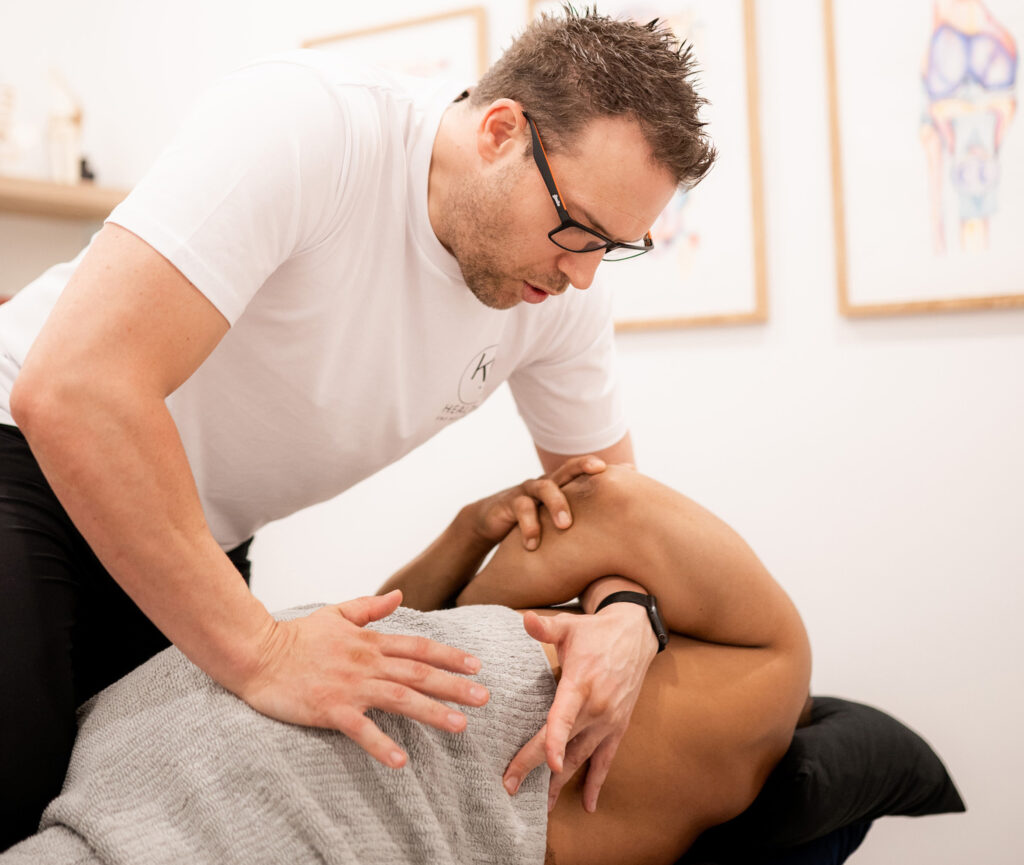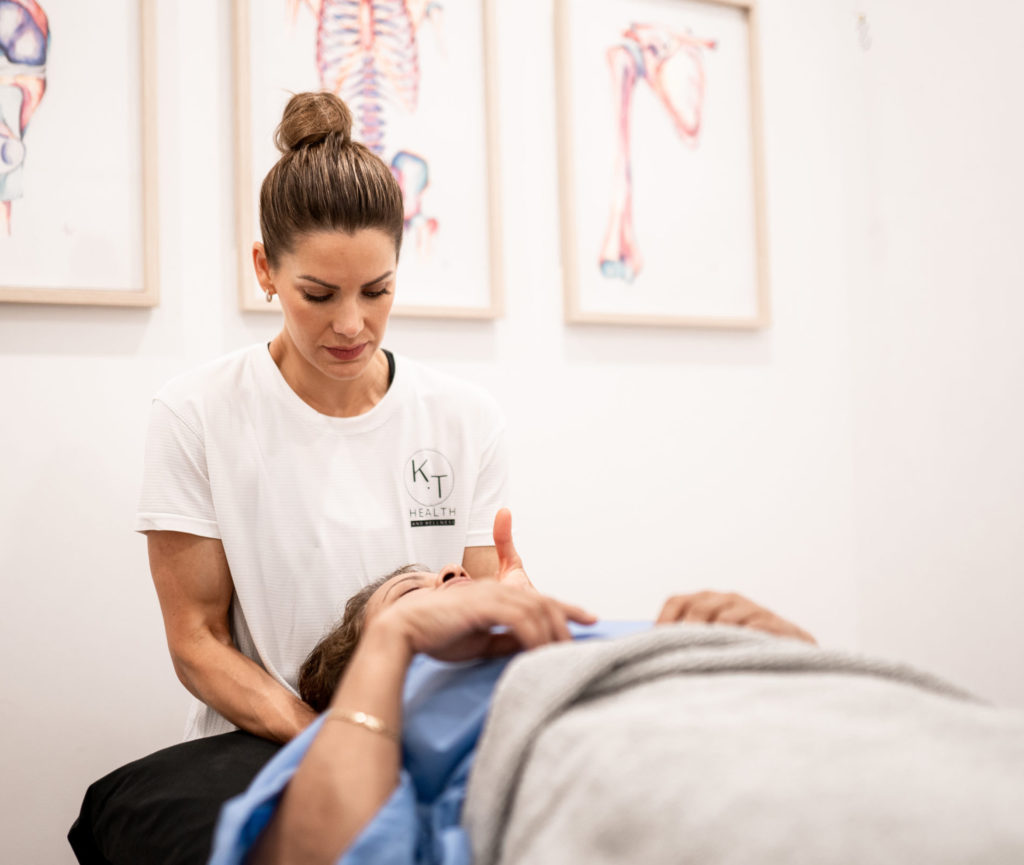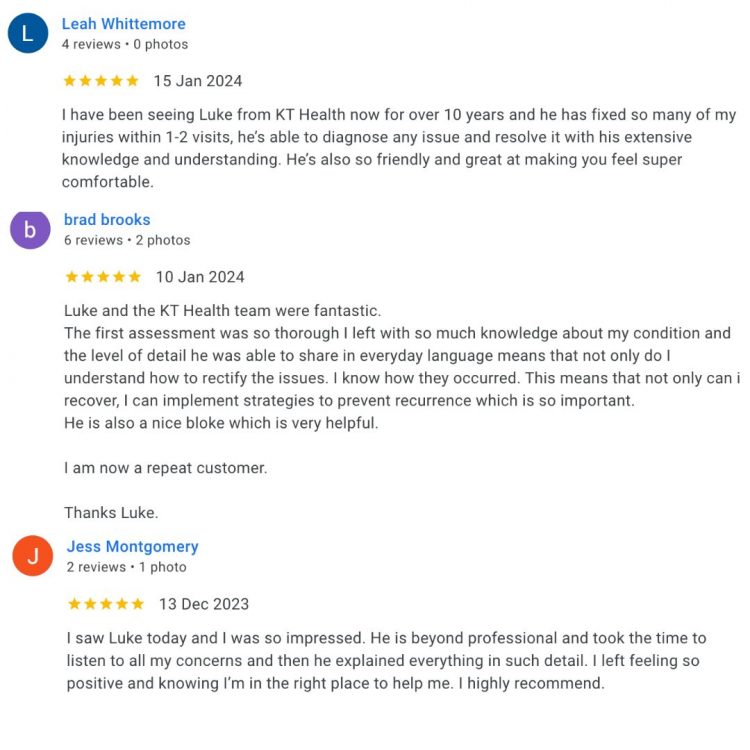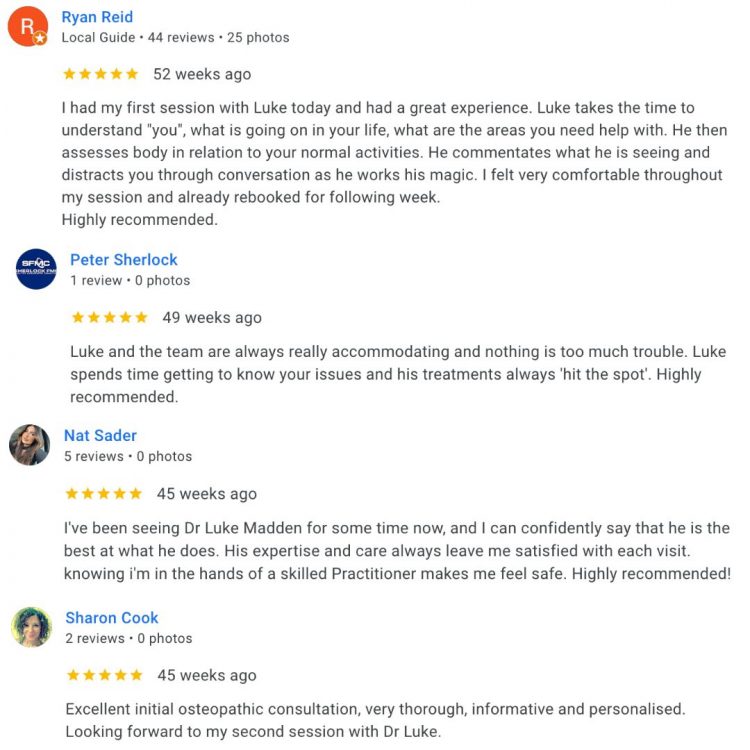Everything You Need to Know About Subacromial Bursitis
What is Subacromial Bursitis?
Subacromial bursitis is a condition where the bursa, a small fluid-filled sac that cushions the space between the shoulder blade (acromion) and the rotator cuff tendons, becomes inflamed. This inflammation causes pain, swelling, and difficulty moving the shoulder, especially during overhead or reaching movements. It’s one of the most common causes of shoulder pain.
An analogy…
Think of the bursa like a small water balloon that helps your tendons glide smoothly under the roof of your shoulder. If that balloon becomes overfilled or irritated, it gets squashed, making every movement feel tight, sore, and restricted.
What causes subacromial bursitis?
The subacromial bursa sits in a tight space under the acromion and above the rotator cuff tendons. If that space becomes narrowed, due to repetitive overhead activity, poor posture, shoulder impingement, or rotator cuff weakness, the bursa can get compressed and irritated. Over time, this leads to inflammation, pain, and loss of smooth shoulder motion.
What are the signs and symptoms of subacromial bursitis?
- Pain at the front or side of the shoulder, especially with overhead movements
- Pain at rest, often worse when lying on the affected shoulder
- The shoulder may feel achy, stiff, or weak
- Certain movements may cause a sharp or catching pain
- Unlike a tendon tear, bursitis often causes a generalised ache rather than a specific weakness
What tests are used to diagnose subacromial bursitis?
Neer’s Test: The practitioner lifts the patient’s straight arm up in front of the body. If this causes pain in the front or top of the shoulder, it suggests that the inflamed bursa is being compressed under the acromion, indicating possible subacromial bursitis.
Hawkins-Kennedy Test: The patient’s arm is raised to shoulder height and bent at the elbow. The practitioner then rotates the arm inward. If this movement causes sharp pain, it may mean the bursa is being pinched, which is common in subacromial bursitis.
How long does subacromial bursitis take to heal?
Recovery depends on how early the condition is treated. In most cases, symptoms improve within 2 to 6 weeks with proper management. If the bursitis is more chronic or linked to other shoulder problems like rotator cuff irritation, recovery may take up to 3 months or longer. Addressing the root cause, not just the inflammation, is key to long-term recovery.
How does subacromial bursitis happen?
- Repetitive overhead movements
- Poor posture, especially rounded shoulders and forward head position
- Muscle imbalances, such as weak rotator cuff or scapular muscles
- Shoulder impingement, leading to irritation of the bursa
- Tight chest or upper back muscles, which can reduce space in the shoulder joint
- Direct impact or fall on the shoulder, causing inflammation
What treatment can help subacromial bursitis?
- Follow the R.I.C.E. regime (Rest, Ice, Compression, Elevation) in the first 72 hours
- Rest from aggravating activities and apply regular ice
- Anti-inflammatory medication may help reduce pain and swelling
- Use manual therapy (massage, dry needling, joint mobilisation) to improve flexibility and healing
- Begin a graduated exercise program focused on posture, scapular control, and rotator cuff strength
What exercises or stretches can I do for subacromial bursitis?
- Shoulder Blade Squeezes
- Pendular Exercises
- Pendular Circles
What products can help with subacromial bursitis?
Isometric shoulder extension
Sit or stand up straight with your back to a wall.
Keep your affected arm by your side and bend your elbow to 90 degrees.
Place the back of your elbow against the wall.
Without moving your body, press your elbow backwards into the wall.
Hold this position and then relax.

Isometric shoulder flexion
Sit or stand up straight facing a wall.
Keep your affected arm by your side and bend your elbow to 90 degrees.
Place your fist against the wall.
Without moving your body, press your fist into the wall.
Hold this position and then relax.

Press up plus against wall
Stand up straight facing a wall.
Place your hands onto the wall around shoulder height but slightly wider.
Your fingers should point directly up to the ceiling.
Maintain a straight line from the top of your head to your heels.
You should feel your abdominal, buttock and thigh muscles tighten to help control this.
Drive the heels of your hands into the wall, flattening your shoulder blades against your back.
Your neck should remain long so ensure you do not hunch your shoulders up.
Next, bend your elbows out to the side, pivoting on the balls of your feet as you move your body in one straight line in towards the wall
Keep your abdominal, buttock and thigh muscles strong through out.
Straighten your arms out again, lifting your body away from the wall.
As you straighten, think about driving the heels of your hands into the wall again to flattening your shoulder blades against your back.

STOP GUESSING – START MOVING
See what other people have said about our osteopaths
Trustindex verifies that the original source of the review is Google. KT health has really helped my back and i have been able to get back into competitive sportTrustindex verifies that the original source of the review is Google. Absolutely amazing, I see Louie Nouh who always listens and caters to my needs. He is amazing at his job and always helps alleviate my pain. I highly recommend Louie.Trustindex verifies that the original source of the review is Google. Friendly, supportive staff. Such a lovely place to exercise! Highly recommend.Trustindex verifies that the original source of the review is Google. Amazing instructor, I am new to Pilates felt very comfortable & supported.Trustindex verifies that the original source of the review is Google. I have been suffering from shoulder and neck pain for months - I saw Dr Louie Nouh a couple of time. His treatment really relived the pain. I have full range of movement now. His knowledge on exercise is fantastic.Trustindex verifies that the original source of the review is Google. Absolutely love reformer at menai. Instructors are amazing. Love Michaela and love the small classes. Highly recommend!Trustindex verifies that the original source of the review is Google. The trainers are all amazing , they explain everthing step by step and help where needed . It is an amazing place to relax get to know other people have a laugh . I recommend for anyone .Trustindex verifies that the original source of the review is Google. Ever since I came here I’ve been looked after by Louie and my shoulder is already feeling much better. Highly Recommend these are good people.Trustindex verifies that the original source of the review is Google. SENSATIONAL Chiropractor in Menai! I attended my first appointment with Dr Louis Nouh at KT Health & Wellness who is an absolute genius even after one session with him. He explained everything he intended to address about my lower back condition, all in easy to understand, layman’s terms. He said he would call me the next day to follow and see how I was feeling after our session and guess what, he did! During our session, he made me feel relaxed and comfortable especially as it was my first chiropractic appointment EVER! For some reason, I am actually looking forward to my subsequent sessions with him next week. Don’t get me wrong, he did poke, prod and crack me as necessary but the results made it seem worth it.Trustindex verifies that the original source of the review is Google. I have been seeing Melinda now for a couple of months to help with bursitis in my hip. She is one of the best practitioners I’ve ever seen.. With the use of various tools and techniques she has helped me recover much quicker than I expected. Thanks Mel and see you tomorrow!
We don't offer magic fixes or cures, but a sustainable approach to back pain.
Our Osteopaths will offer you a road map to help you take control of your back pain and feel great again.
BOOK YOUR OSTEOPATH VISIT TODAY
Book a Time with Dr Luke Madden Below
Book a Time with Dr Melinda Madden Below
Already have an account?
Book as a guest
- Book an Appointment






